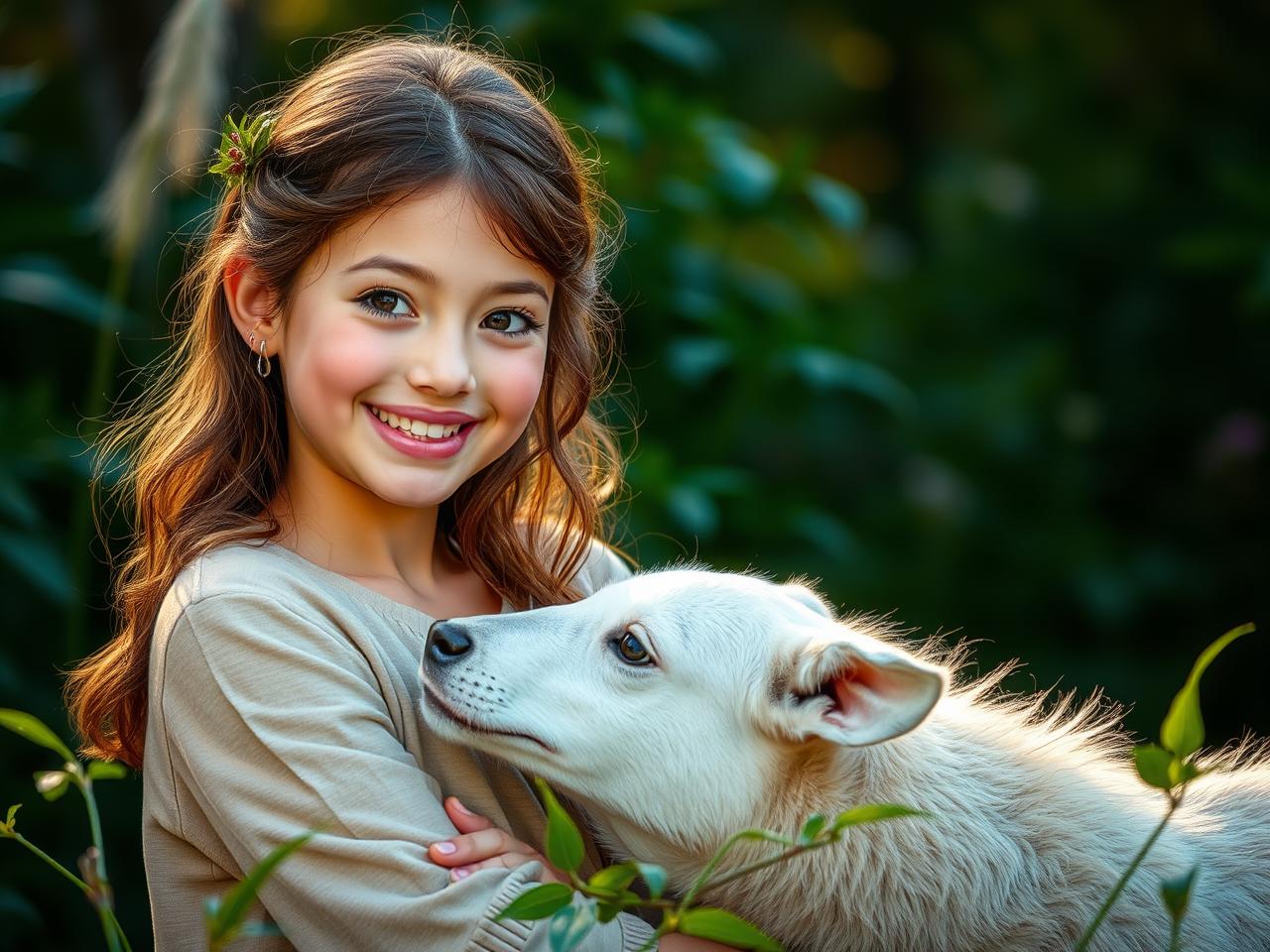Why Certain Animals Are Attracted to You: Understanding Animal Behavior
Animals, like humans, are influenced by various factors in their attraction to others. One primary driver is the biological imperative for procreation, which is essential for species survival. This reproductive drive often manifests in specific behaviors and physical characteristics that appeal to potential mates.
Examples include elaborate courtship displays, demonstrations of strength or agility, and the production of pheromones to signal readiness for mating. Another significant factor in animal attraction is the need for companionship and social interaction. Many species are inherently social, forming bonds with others of their kind.
These relationships can be based on family ties, friendships, or mutually beneficial alliances. In such cases, attraction stems from the desire for social engagement and the advantages of group living, such as enhanced protection from predators, shared resources, and opportunities for social learning.
Key Takeaways
- Animals are attracted to certain traits in humans, such as calmness and confidence.
- Body language plays a crucial role in how animals perceive and interact with humans.
- Scent can greatly influence animal behavior and communication.
- Understanding animal instincts can help humans better understand and predict animal behavior.
- Building a strong human-animal bond requires respect, understanding, and patience.
The Role of Body Language

Displaying Strength and Dominance
In the animal kingdom, a display of dominance or strength through body language can be attractive to potential mates. This can manifest in various ways, such as puffing up feathers, standing tall, or engaging in physical displays of strength like wrestling or sparring.
Signaling Receptiveness to Mating
In addition to displaying strength, animals use body language to signal their receptiveness to mating. This can involve subtle cues, such as a female animal presenting herself to a male, or a male animal performing a courtship dance or song to attract a mate.
Establishing Social Hierarchies
Body language is also crucial in establishing social hierarchies within a group, which can significantly influence attraction and mating opportunities. By deciphering and interpreting the body language of animals, researchers and animal behaviorists can gain valuable insights into the intricate dynamics of attraction in the animal kingdom.
Scent and Animal Behavior

Scent plays a significant role in animal behavior and attraction. Many animals rely on their sense of smell to communicate with others, mark their territory, and attract potential mates. Pheromones, which are chemical signals released by animals, play a crucial role in attracting mates and signaling reproductive readiness.
These pheromones can convey information about an animal’s health, genetic compatibility, and reproductive status. In addition to pheromones, animals also use scent to mark their territory and communicate with others in their species. By leaving scent marks in their environment, animals can establish their presence, warn off potential rivals, and attract potential mates.
This form of olfactory communication is essential for maintaining social structures within a group and ensuring successful mating opportunities.
Animal Instincts and Human Behavior
The instincts that drive animal behavior can also influence human behavior in various ways. For example, humans often exhibit similar behaviors and traits when it comes to attraction and mate selection. Like animals, humans may display physical attributes or behaviors that are considered attractive to potential mates.
This can include traits such as strength, agility, and physical attractiveness. In addition to physical traits, humans also rely on social interactions and communication to attract potential mates. Just as animals use body language and scent to signal their readiness to mate, humans use verbal and non-verbal cues to communicate their intentions and attract potential partners.
Understanding the instincts that drive animal behavior can provide valuable insights into the complex dynamics of human attraction and mate selection.
Human-Animal Bonding
The bond between humans and animals is a unique and special relationship that has evolved over thousands of years. This bond is based on mutual trust, companionship, and the fulfillment of emotional needs. Many people form deep emotional connections with their pets, which can provide comfort, companionship, and a sense of purpose.
In return, animals benefit from the care, protection, and companionship provided by humans. The bond between humans and animals is also evident in the use of therapy animals to provide emotional support and comfort to people in need. Therapy animals are trained to provide comfort and companionship to individuals in hospitals, nursing homes, schools, and other settings.
The presence of these animals can have a profound impact on the emotional well-being of people, reducing stress, anxiety, and feelings of loneliness.
Environmental Factors
Resource Competition and Aggressive Behavior
In some cases, animals may compete for limited resources, leading to aggressive behaviors and displays of dominance.
Environmental Factors and Mate Availability
Environmental factors can also influence the availability of potential mates for animals. For example, seasonal changes in temperature and food availability can impact the timing of mating seasons for many species.
Disruptions to Social Dynamics
In addition, changes in habitat due to human activity or natural disasters can disrupt the social dynamics of animal groups and impact their ability to attract mates.
The Importance of Respect and Understanding
Respect and understanding are essential when it comes to interacting with animals and appreciating the complexities of animal attraction and behavior. It is important to recognize that animals have their own unique needs, instincts, and behaviors that should be respected and understood. By taking the time to observe and learn about animal behavior, we can gain a greater appreciation for the diversity of life on our planet.
Respect for animals also involves advocating for their welfare and conservation. As human activity continues to impact natural habitats and wildlife populations, it is crucial to take steps to protect and preserve the natural world for future generations. By promoting conservation efforts and supporting ethical treatment of animals, we can ensure that future generations will have the opportunity to appreciate the beauty and complexity of animal attraction and behavior.
In conclusion, animal attraction is driven by a variety of factors including the need for procreation, social interaction, body language, scent, instincts, environmental factors, and the human-animal bond. By understanding these factors and showing respect for animals, we can gain valuable insights into the complexities of animal behavior and contribute to the conservation of wildlife for future generations to appreciate and enjoy.
FAQs
What is animal attraction?
Animal attraction refers to the phenomenon where certain animals are drawn to specific individuals. This can be due to a variety of factors such as body language, scent, or behavior.
Why are certain animals attracted to certain people?
Animals may be attracted to certain people due to a variety of reasons such as the individual’s body language, scent, or the way they interact with the animal. Additionally, some animals may be more comfortable around certain types of people based on their past experiences.
What are some common reasons animals are attracted to people?
Some common reasons animals are attracted to people include the individual’s calm and gentle demeanor, the scent of the person, or the way the person interacts with the animal. Additionally, animals may be attracted to individuals who provide them with food or shelter.
Can animal attraction be a sign of something else?
In some cases, animal attraction can be a sign of something else such as the individual being in distress or the animal being in need of assistance. It’s important to assess the situation carefully and consider the well-being of both the animal and the individual.
How can understanding animal behavior help in attracting certain animals?
Understanding animal behavior can help individuals attract certain animals by allowing them to adjust their body language, behavior, and interactions to be more appealing to the animal. Additionally, understanding the needs and preferences of the animal can help create a more welcoming environment for them.






